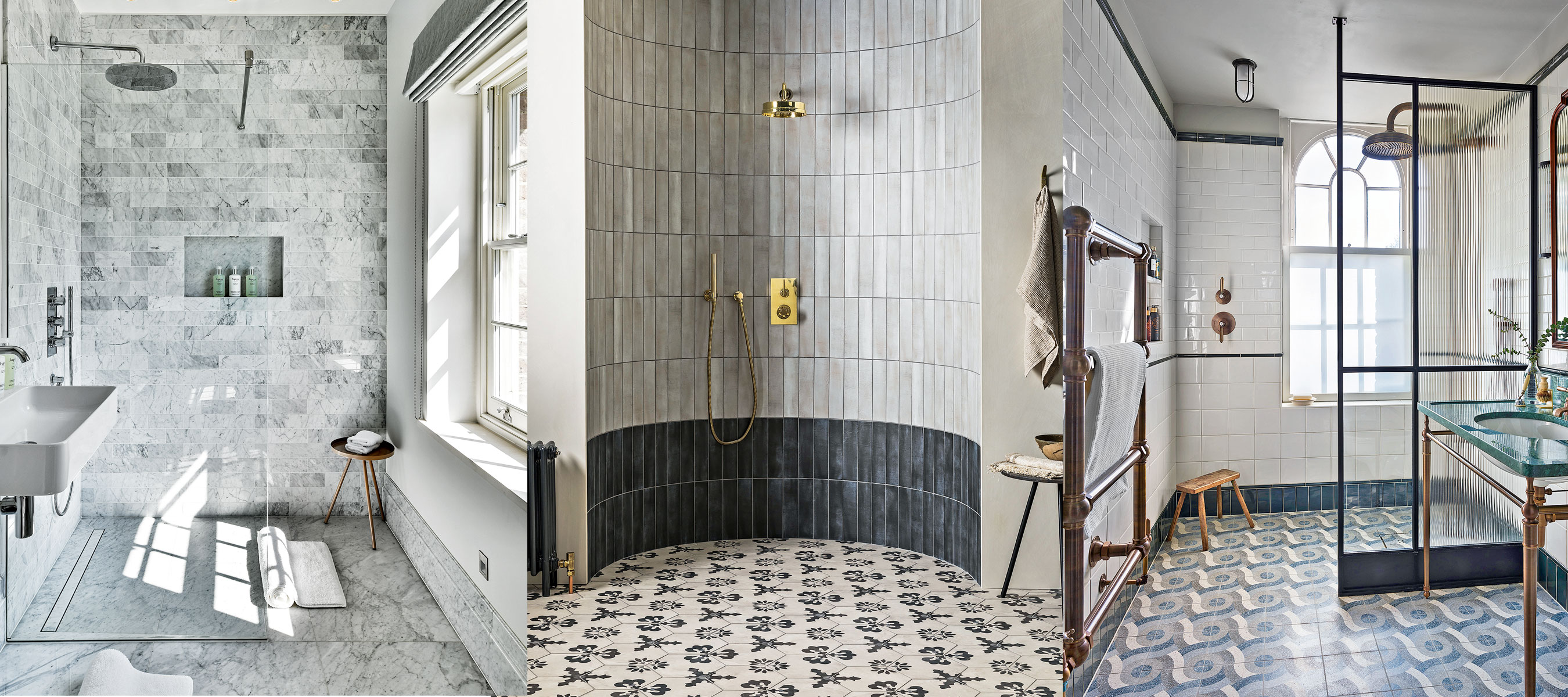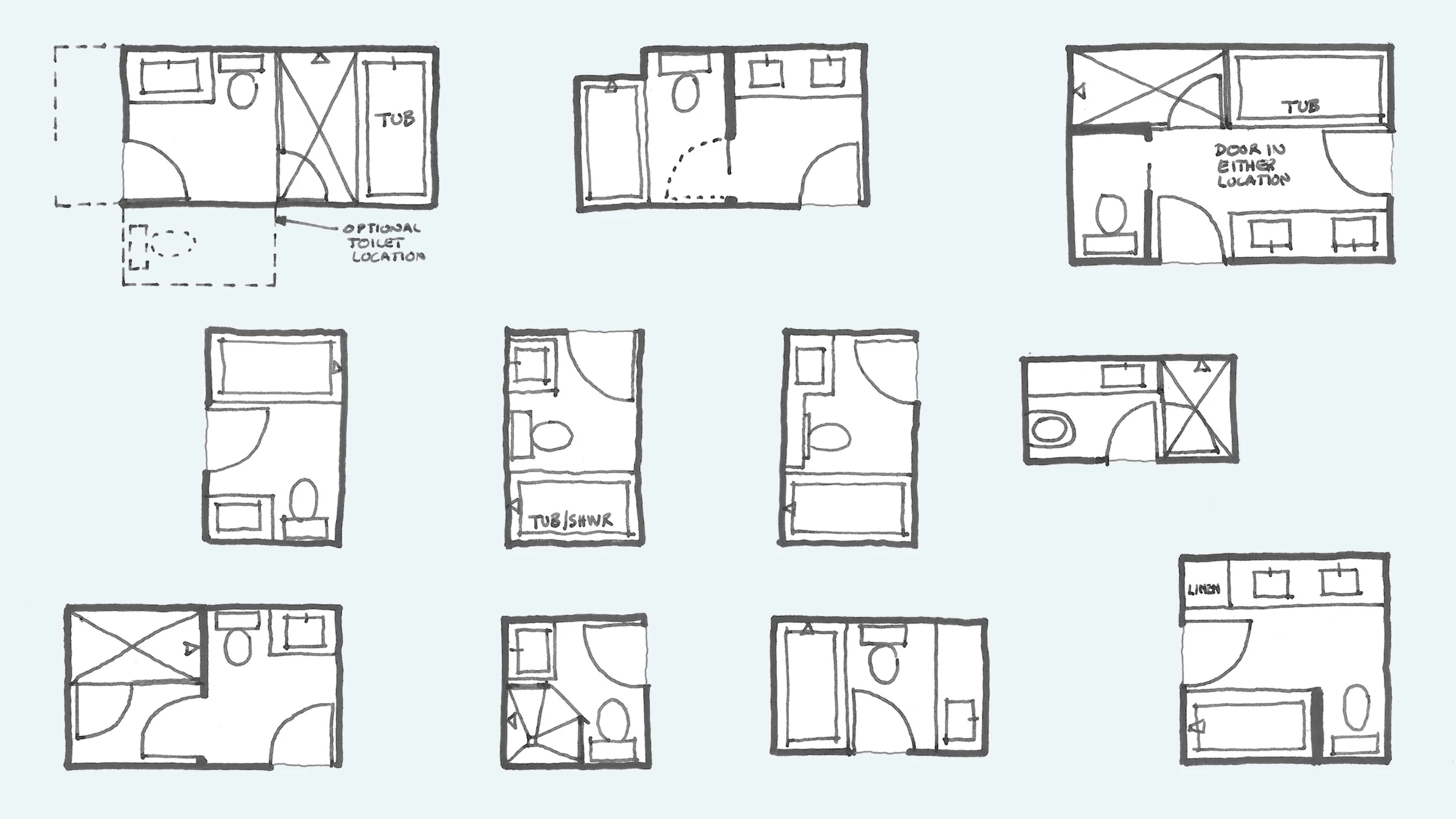Understanding Wet Floor Bathroom Design Challenges: Wet Floor Bathroom Designs

Designing a wet floor bathroom presents unique challenges that demand careful consideration to ensure functionality, safety, and longevity. Unlike traditional bathrooms with separate shower stalls, wet floor designs embrace the concept of a single, unified space where water is freely allowed to flow. This approach creates a visually seamless and modern aesthetic but necessitates specialized design strategies to manage water effectively and prevent potential issues.
Waterproofing and Drainage
Waterproofing is the cornerstone of a successful wet floor bathroom. The constant presence of water necessitates robust measures to prevent leaks and water damage. Traditional bathroom designs often rely on a shower stall with a curb to contain water, but wet floor designs require a comprehensive waterproofing system that extends throughout the entire bathroom floor.
- Membrane Waterproofing: A waterproof membrane is typically installed beneath the floor tiles, acting as a barrier to prevent water penetration. This membrane can be made from various materials, such as PVC, EPDM, or liquid-applied coatings, each offering unique properties and benefits.
- Drainage System: A well-designed drainage system is crucial for efficiently removing water from the bathroom floor. A linear drain, often positioned along the wall or in the center of the room, provides a continuous channel for water to flow. The drain must be adequately sized to handle the water volume, and its slope must be carefully calculated to ensure proper water flow.
Ventilation
Proper ventilation is essential to combat moisture buildup, prevent mold growth, and maintain a healthy bathroom environment. Wet floor bathrooms require adequate ventilation to remove excess moisture from the air, particularly after showering or bathing.
- Exhaust Fans: Installing a powerful exhaust fan is crucial for removing moisture from the air. The fan should be sized appropriately for the bathroom’s volume and should be operated during and after showering to effectively remove moisture.
- Natural Ventilation: If possible, incorporating natural ventilation, such as a window or skylight, can enhance air circulation and reduce moisture buildup. However, it’s essential to ensure that the window or skylight is properly sealed to prevent water ingress.
Material Selection
The choice of materials plays a critical role in the success of a wet floor bathroom. Selecting materials that are resistant to water, moisture, and mold is essential to prevent damage and ensure longevity.
- Floor Tiles: Porcelain and ceramic tiles are excellent choices for wet floor bathrooms due to their durability, water resistance, and ease of cleaning. Look for tiles with a low water absorption rate (less than 0.5%) and a slip-resistant surface to enhance safety.
- Wall Finishes: Waterproof wall finishes, such as tile, glass, or epoxy coatings, are ideal for wet floor bathrooms. These materials resist moisture and are easy to clean, reducing the risk of mold growth.
Exploring Wet Floor Bathroom Styles and Features
The beauty of wet floor bathroom designs lies in their adaptability to diverse styles and preferences. Whether you envision a minimalist sanctuary, a contemporary oasis, an industrial haven, or a traditional retreat, a wet floor bathroom can be tailored to your aesthetic vision. Let’s explore the possibilities and delve into the design elements that elevate these spaces to new heights.
Wet Floor Bathroom Styles
The versatility of wet floor bathroom designs allows for a wide range of stylistic interpretations. Here are a few popular styles to inspire your own bathroom transformation:
- Minimalist: Characterized by clean lines, neutral colors, and a focus on functionality. Minimalist wet floor bathrooms often feature sleek fixtures, open showers, and a limited use of decorative elements.
- Contemporary: Emphasizes modern design elements, such as geometric shapes, bold colors, and innovative materials. Contemporary wet floor bathrooms may incorporate unique showerheads, integrated lighting, and sophisticated storage solutions.
- Industrial: Embraces raw materials and exposed elements, creating a rugged and edgy aesthetic. Industrial wet floor bathrooms often feature concrete floors, metal fixtures, and reclaimed wood accents.
- Traditional: Draws inspiration from classic design principles, featuring warm colors, ornate details, and timeless fixtures. Traditional wet floor bathrooms may incorporate elegant freestanding tubs, decorative tiles, and vintage-inspired accents.
Incorporating Features
Wet floor bathroom designs offer a canvas for incorporating unique features that enhance both functionality and style.
- Walk-in Showers: Eliminate barriers and create a spacious, accessible showering experience. Walk-in showers can be designed with various finishes, including glass, tile, or stone, to complement the overall bathroom style.
- Integrated Seating: Provides a comfortable and practical seating option within the shower or wet floor area. Integrated seating can be seamlessly incorporated into the design, using materials like stone, tile, or even built-in benches.
- Built-in Storage Solutions: Maximize space and keep the bathroom organized. Built-in storage solutions can be incorporated into the walls, under the vanity, or even within the shower area to accommodate toiletries, towels, and other bathroom essentials.
Wet Floor Bathroom Layouts, Wet floor bathroom designs
The layout of a wet floor bathroom plays a crucial role in its functionality and aesthetics. Here’s a breakdown of common layout options:
- Open-Plan: Creates a sense of spaciousness and fluidity by merging the shower area with the rest of the bathroom. Open-plan layouts can be ideal for smaller bathrooms, maximizing space and creating a unified aesthetic.
- Compartmentalized: Provides a more traditional separation between the shower and the rest of the bathroom. Compartmentalized layouts offer privacy and can be designed with various materials, such as glass walls or curtains, to create a distinct shower enclosure.
Creating a Wet Floor Bathroom Design Plan

Designing a wet floor bathroom requires careful planning and consideration of various factors, including space, functionality, and aesthetics. This section will guide you through the process of creating a detailed design plan, ensuring a successful and enjoyable wet floor bathroom experience.
Designing a Wet Floor Bathroom Floor Plan
A well-designed floor plan is essential for a functional and visually appealing wet floor bathroom. Consider the following aspects when designing your floor plan:
* Space Allocation: Determine the available space and allocate it efficiently to accommodate all necessary fixtures, such as the shower, toilet, vanity, and storage.
* Fixture Placement: Position fixtures strategically to optimize functionality and create a comfortable flow. Consider the distance between fixtures, the accessibility of each, and the overall layout.
* Drainage: Ensure proper drainage by incorporating a slope in the floor towards the drain, typically around 1/4 inch per foot.
* Materials: Select durable and waterproof materials for the floor, walls, and ceiling, such as tile, stone, or epoxy flooring.
Example: A small wet floor bathroom (5ft x 7ft) could feature a walk-in shower with a built-in bench, a wall-mounted toilet, and a floating vanity with ample storage. The floor could be tiled with large format porcelain tiles for a spacious feel, and the walls could be clad with waterproof panels for easy maintenance.
Comparing Wet Floor Bathroom Materials
Choosing the right materials is crucial for creating a durable and aesthetically pleasing wet floor bathroom. Here’s a comparison of some common materials:
| Material | Cost | Benefits | Disadvantages | Tile | Moderate to High | Durable, waterproof, versatile, easy to clean, wide range of styles and colors | Can be slippery when wet, grout lines require maintenance | Stone | High | Natural, luxurious, durable, waterproof, unique patterns | Can be expensive, porous, requires sealing, may be heavy | Epoxy Flooring | Moderate | Seamless, waterproof, durable, easy to clean, resistant to stains and chemicals | Can be difficult to install, limited color options, may be less aesthetically appealing than tile or stone |
|---|
Planning and Executing a Wet Floor Bathroom Renovation
A successful wet floor bathroom renovation requires meticulous planning and execution. Here’s a checklist of essential steps:
* Design and Planning: Develop a detailed design plan, including floor plan, fixture specifications, material selection, and budget.
* Obtain Permits: If necessary, obtain the required permits from your local building department.
* Demolition and Preparation: Remove existing fixtures and finishes, and prepare the space for renovation.
* Plumbing and Electrical: Install or relocate plumbing and electrical fixtures as needed.
* Framing and Waterproofing: Construct the shower enclosure and install waterproofing membranes to prevent leaks.
* Installation: Install the floor, walls, and ceiling materials, ensuring proper drainage and ventilation.
* Fixtures and Finishes: Install fixtures, such as the showerhead, faucet, and toilet, and add finishing touches, such as lighting, mirrors, and accessories.
* Clean Up and Inspection: Clean the bathroom thoroughly and obtain final inspection approval from the building department.
